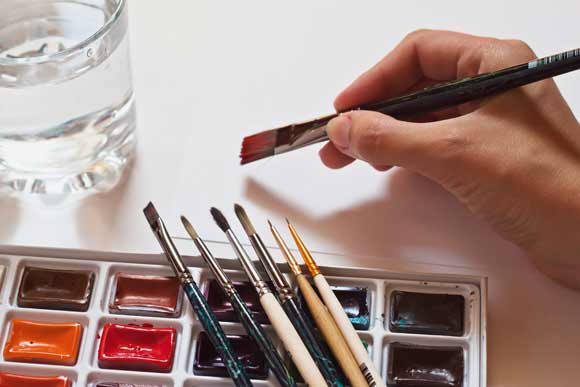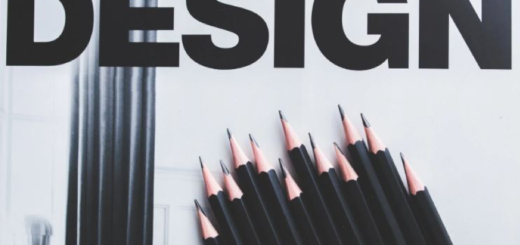The Seven Deadly Sins of Using Templates
2Many may not agree with the title because of the proven success of templates in the design market. This success is evident with the increasing number of design templates and stock graphics websites. Many designers, and I am one of them, consider the concept of design templates one of the blessings of the web. Nowadays designers can save much time and effort by using stock design resources that other designers have created and are selling in many places on the web.

Now, the question that arises at this point is how stock resources and templates have affected the creativity and originality of design works. The nature of the designer’s work depends on creativity and unified ideas in the first place. There is no doubt that using repeated artwork or stock artwork that is done by other designers, and other people are using it over and over again can affect this flow of creativity in one way or another.
The seven sins in this articles are not real sins, they are more like guidelines for designers to understand where their creativity stands and to judge if it is at risk or not. Being aware of these seven points may help designers not to lose their creativity and turn into template users.
Limits the designer’s creativity
Of course, buying a brochure template for a small amount of money and customizing it for the client can save a lot of time and cost compared to building the same from scratch. It seems like a successful trade marketing-wise. On the other hand, you are losing an important chance to practice your creativity by building a unique design. You simply used another person’s design and implemented it in your project with contextual permission from the original designer who worked on the creative concept.
If you do many projects this way, you might find that you have turned into a template customizer more than a designer of original work, and the market can help you to easily reach this undesirable extreme.
The previous opinion is from the aspect of creativity. So how can the designer maintain both a successful business and an increasing creativity to practice in projects at the same time?
A design project is usually divided into two parts, the creative part when the designer creates a unique design and creative ideas, and the repeated work, when designers use the elements that have been done before, such as buttons, images, etc.
When a designer understands the difference between the two kinds of design tasks he or she can put more efforts into the creative task and use templates and stock resources for other tasks to save time and effort.
Misleads the timing and deadlines of a creative project
Using templates and stock designs helps you to accomplish design jobs fast compared to creating each design element from scratch. This affects the delivery time of the job and squeezes it. On the other hand, spending time on developing ideas and creative concepts expands the project delivery time, because creating a unique design or layout requires more effort and so it takes more time.
Subsequently, this difference in work methods creates a noticeable gap in project times as well, which affects the clients’ choice of designer.Most clients prefer to have their work delivered fast and believe that a faster designer is a better one; however, it is not the case when we try to compare designers who use templates and designers who create unique works from scratch.
Some clients negotiate the project time with you, which gives you the chance to express why your work with the designtakes more time than for other designers who use ready-made templates and customize them.

Image by shutterstock
Undervalues the cost of creativity
From the clients’ point of view, a project is time, cost and quality, but the originality of the work is not included in this formula. Sometimes it can be part of the quality of the work, but there are other factors that affect the quality of the work as well. While stock templates offer high quality in some respects, such as proficiency, outline and concept, they do not provide originality because the same work is used again and again by different designers and for different clients.
When the client judges the project results, the judgment depends on the final look and feel of the design,not the work implemented in creating this output. Thus, the creative input may be undervalued compared to projects where customized templates have been used, because the client will see that the template work is good quality and was done in less time. This may result in the client undervaluing the creative work compared to the ones using templates and stock designs.
To avoid this undervaluing of your creativity, you can follow the same idea as in the previous sin by trying to provide more information for the client about the creativity in your work and the benefits of presenting a unified design experience.
Non-designers do the design jobs
This is one of the most crucial issues that have had an impact on the design market after the release of stock designs and templates,since templates are easy to edit and a lot of them do not require a designer to edit it. This has affected the design market and many clients now prefer to use templates and edit them for themselves, or give it to a developer or general skills person to edit it. Reducing the cost is always one of the clients’ favorite plans, especially if they can still maintain good quality.
Using templates has its advantages, however, it limits the designer work in many fields, especially in web design where everyone can buy cheap web templates and implement them into any CMS.

Image by shutterstock
Furthermore, graphic design as a science requires a lot of time and effort to learn in order to become a true designer and maintain a professional level in your career. With the use of templates, the design job becomes an easy task for any person with half the knowledge of a designer, or even without knowledge, it is just getting and customizing the template. This had a strong impact on the majority of the designers in the market. There has been an increase in the number of juniors and designers with basic knowledge,while the number of skilled designers keeps decreasing compared to the total number of designers in the market.
However, this design employment tendency does not affect fulltime designers, because the hiring decision depends on many factors, such as studies, design experience and work samples. It is the freelance design market that is affected because clients usually need a very specific task that requires specific skills, but even a designer with basic knowledge can apply if they can prove they have the skills for the specific task.
A solution for this problem probably cannot be expected, since the market is open to designers with any experience and skills. Experienced designers and skilled, creative people can focus on the areas of design where the designers with basic knowledge cannot compete with them.
Low originality in the work
The websites and other design areas that require unique and creative ideas are very different in their style, look and feel from those that rely on templates, which you can easy notice on WordPress website templates, because they have general and repeated theme styles compared to the creative websites that are done in Flash.
However, while the using of templates results in less original or creative work, it helps in creating user-friendly design because many people test and modify the same design styles.
There is a small niche in the design market that requires unique and original work, usually big companies or creative studios that become known in the market for presenting a remarkable and unique style. Many other companies do not do it this way because a creative design concept is more expensive and highly skilled designers are required to do it.
However, the decision whether to work with big firms or small companies is always the choice of the designer and his ability to get relations and connections, which will allow him or her to gain a position in a large creative team as a full-time a freelance designer.
Turns you into a lazy designer
There are a lot of factors that affect the designer’s work and career, the client types and the work stress, which may force the designer to rely partially or fully on using templates and design stock in order to meet the clients’ deadlines and low project budgets.
These factors can affect the designer badly and with time they can turn their creative mind into a lazy one that does not want to think outside the box or create new ideas. The creative mind may be come too task-oriented without concern for the creative aspects of projects and they may lose the desire to learn and fuel creativity in each project.
Fully relying on templates can turn you into a lazy designer and this can affect your creative skills with time. To avoid this, it is a good idea not to use templates in all your work, but use them smartly and only when needed. This way, you can still have a space for your creativity in each project.

Image by shutterstock
Compete with the creative work in the market
Many clients do not have the eagle eye to tell the difference between original and template repeated designs, which causes a real competition between the original works and template-based ones in the market. From the expert’s point of view, there is no real competition because they know the difference between the work that is needed, the effort and the knowledge required to create unique work.
However, an expert designer should pinpoint the unique work and cover its case study in the profile or the studio website of the designer. Usually, an original work will be more expensive and takes more time to complete than template based designs, but on the other hand it will be unique and will provide a unified identity to the client’s business.
Conclusion
There are many advantages and disadvantages of using templates, especially in creative work. Smart designers should work to enjoy the benefits of using templates, but at the same time keep the design work creative and show their unified skills that distinguish them from the others in the market. Achieving this goal can help the designer to gain success in business and in the creative life as well.





This question (to “template” or not to “template”) constantly plagues me. To date, I have never used a template but I know I lost at least one job in the qualifying stage when the customer asked be “do you use templates ?” and I said no. (Altho I did get the SEO work.)
As a developer you can create many tools to help automate your work but design is inevitably slow and tedious. Perhaps the trick is to determine for what categories of work I may be willing to use a template.
The tough thing is that I think Branding matters. For every customer. And unique branding is where templates fall short.
Nice thoughtful post Rafiq.
Thank you for your thoughts, I agree with you that the situation is when to “template” or not to use “template”.I believe this is the thin line between using templates in right or wrong way.